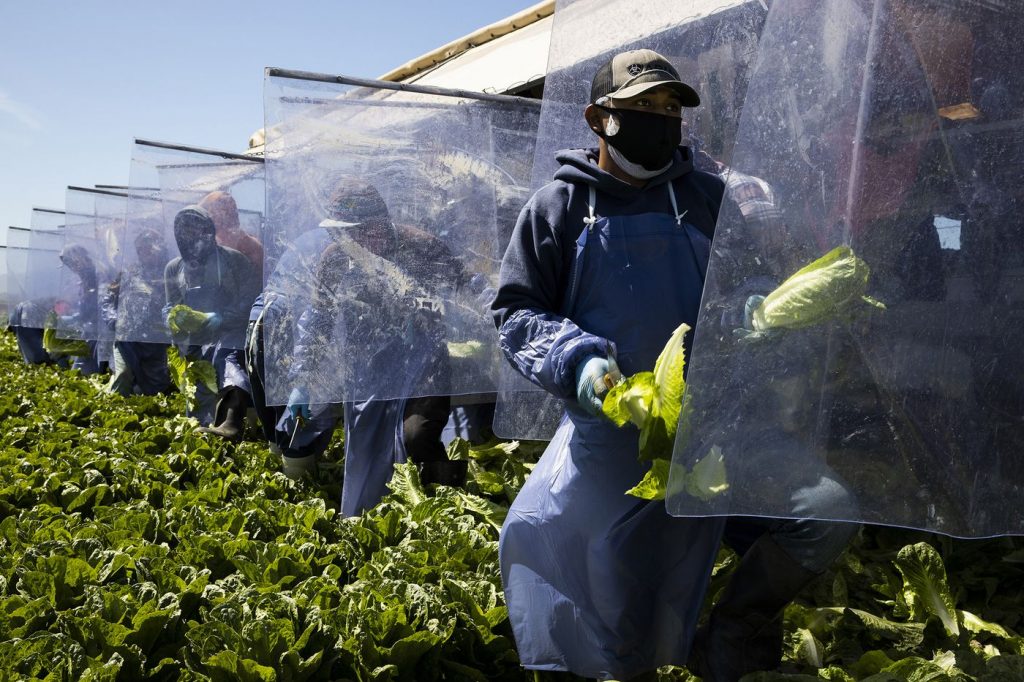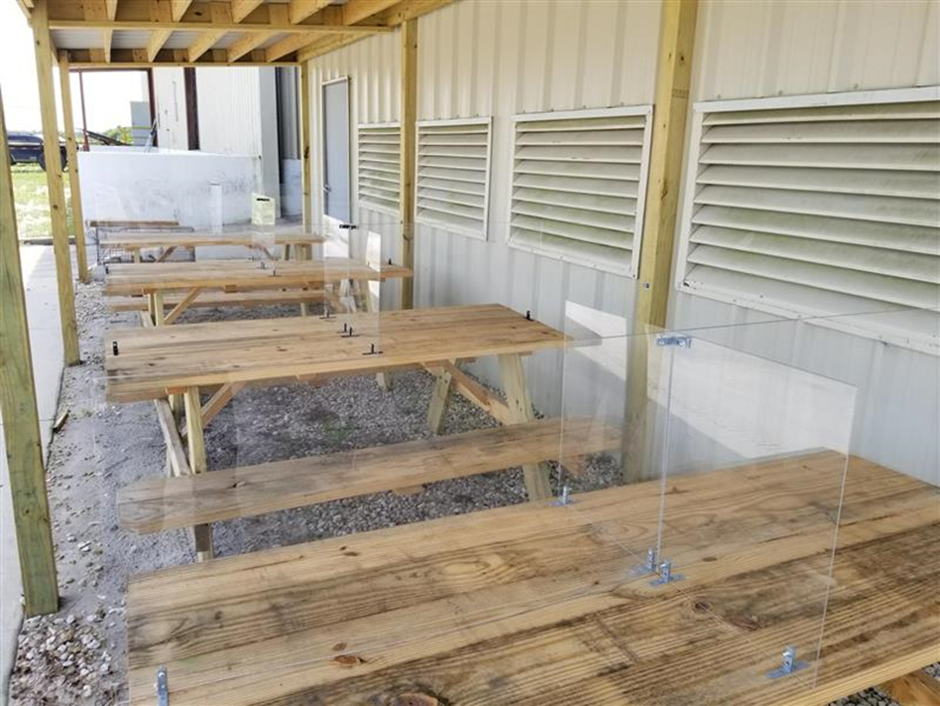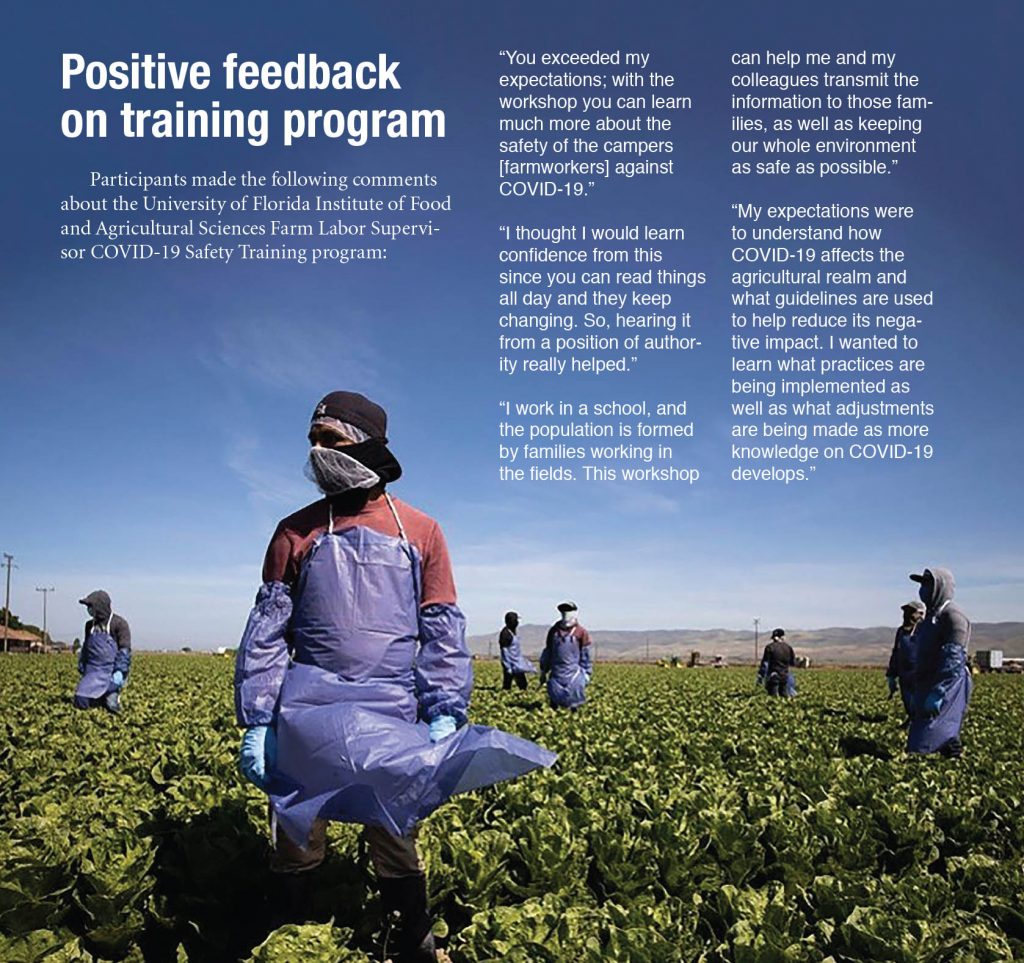
By Kimberly L. Morgan
Throughout the food supply chain, producers, processors, distributors, wholesalers and retailers seek economies of scale and scope to improve profit margins, while delivering safe, consistent, reliable and relatively low-cost foods to consumers. At the farm level, owners make decisions to minimize production and harvesting costs, relying on human resources and scientific advances to address the dynamic uncertainties unique to the agricultural industry.
During the 2020 global pandemic, every individual, household, company and government had to adjust day-to-day behaviors. Yet nationwide, few food shortages occurred, and minimal increases in prices have been documented to date. The U.S. agricultural industry continued to provide healthy and safe food, due in large part to the adaptability of farmworkers, supervisors and owners.
Workers labor long hours in physically demanding conditions, with paychecks dependent on speedy, accurate and careful handling of fruits and vegetables to ensure high-quality, safe produce is delivered to buyers. The economic implications of the highly transmissible coronavirus range from short-term negative impacts on worker health and farm profitability to the immeasurable losses of life.
To proactively educate farm owners, supervisors and workers on how best to do their jobs under pandemic conditions and preserve their health and livelihood, the University of Florida Institute of Food and Agricultural Sciences (UF/IFAS) Farm Labor Supervisor COVID-19 Safety Training program was developed.
With decades of experience educating nearly 1,500 farm labor supervisors on how best to protect farmworkers’ lives, the training team has delivered six webinars in both Spanish and English to 775 participants. The training consists of three sections:
PART 1: WHAT IS THE CORONAVIRUS OR COVID-19?
Motivated by the trainers’ observations that farmworkers tend to distrust technology used in the fields (for instance, the scan systems that track production), this section addresses their concerns by sharing information regarding the COVID-19 testing and health-monitoring procedures specific to agricultural operations.

Farmworkers often fail to recognize COVID-19 symptoms and/or don’t think it is a problem that will affect their health as many are relatively young and work primarily outdoors. To mitigate this prevailing mindset, general information is included about the virus, whom it targets, Florida statistics, typical symptoms, case studies and transmission examples.
Ag-related COVID-19 cases are shared to relay facts that the disease is a real and persistent threat to the health and wellbeing of farmworkers, and to communicate that there are things workers can do to protect themselves and others. Florida Department of Health statewide COVID-19 infection and mortality rates by ethnicity, age and county are shared to show the real-time relevance and impact of the virus on communities.
PART 2: COVID IN AGRICULTURE
Building on Centers for Disease Control (CDC) guidelines, UF/IFAS experts apply their firsthand knowledge of the day-to-day working environment on Florida’s farms and share best practice recommendations to help protect farmworkers’ lives. As local and state agencies work to provide farmworker access to COVID-19 testing sites, this information is shared. Supervisors are encouraged to adopt prevention and control tips and to post CDC-approved worker education resources in appropriate languages. The training stresses the importance of practicing social distancing, wearing masks and handwashing both on and off the farm.
PART 3: PROTECTING SUPERVISORS AND WORKERS
Farmworkers are typically paid hourly. Time off due to COVID-19 symptoms or quarantining for 14 days after exposure to a COVID-19-positive coworker results in costs to both the worker and the employer. The employers may need to provide sick pay and find and hire a replacement.

The training provides information on financial support programs from various agencies that are available for both farmworkers and owners to address these concerns. Since harvest practices usually are built around teams working in proximity, creative ways are suggested to complete the work while maintaining social distancing. This includes forming groups that share work assignments and living arrangements to minimize exposure during shift changes.
Also included in this section of the training is the latest CDC general guidelines and the Agricultural Employer Checklist for Creating a COVID-19 Assessment and Control Plan. Other topics covered are:
- How to screen workers
- The importance of employees reporting to their employers if they begin to feel sick
- Areas that put workers at most risk and how to make them safer
- Handling sick time
- Assigning responsibility to ensure practices are followed
- Numerous resource websites
Dates for future training and responses to frequently asked questions related to protecting farmworkers from COVID-19 will be posted on the UF/IFAS Farm Labor Supervisor Training Facebook page (www.facebook.com/FLSTraining15).









